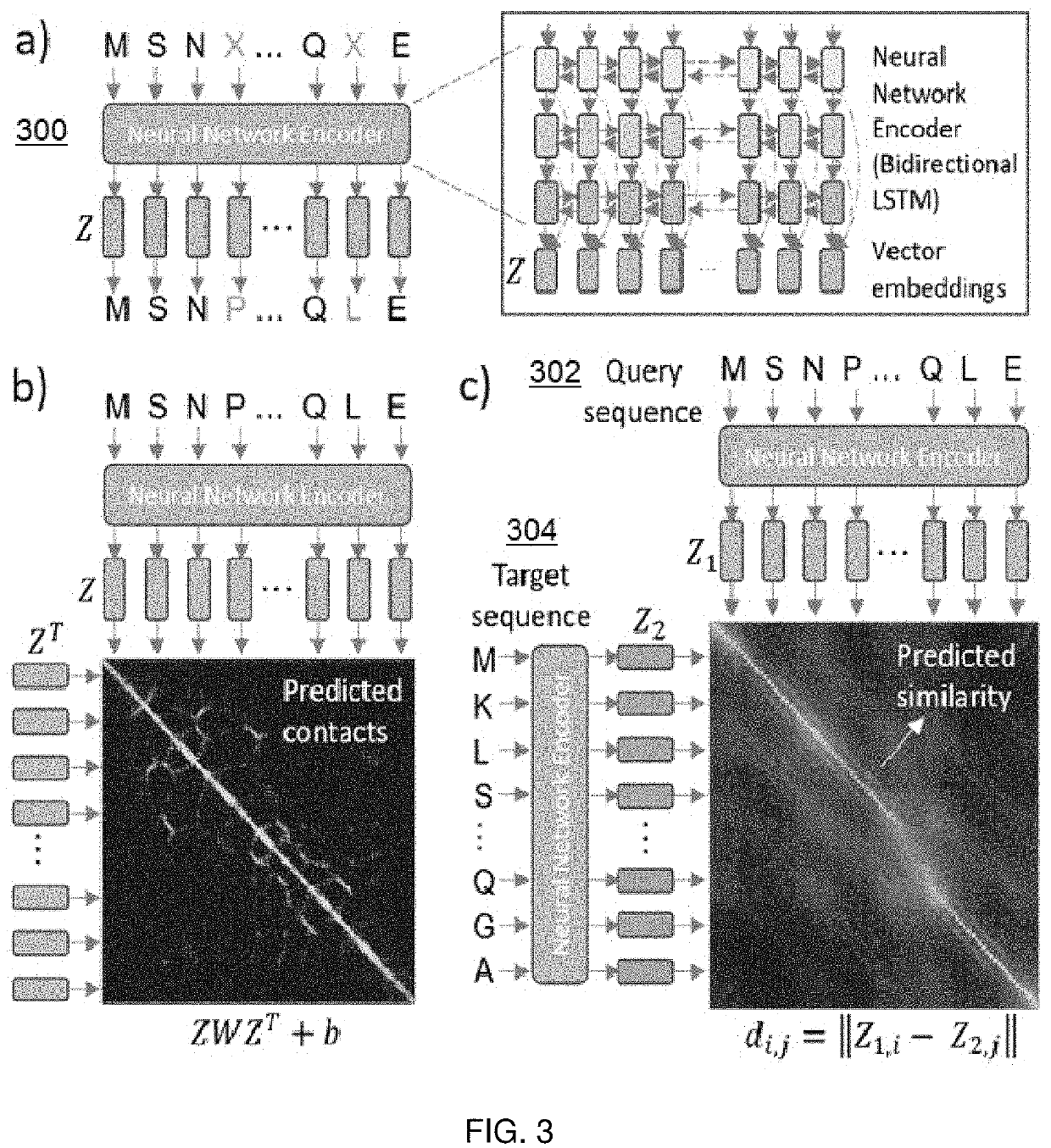Protein database search using learned representations
a database and representation technology, applied in the field of efficient information search and retrieval methods for searching protein sequences, can solve the problems of complex relationship between sequence structure and function, and challenge computational modeling abilities, and achieve the effect of rapid and accurate search of vector spa
- Summary
- Abstract
- Description
- Claims
- Application Information
AI Technical Summary
Benefits of technology
Problems solved by technology
Method used
Image
Examples
Embodiment Construction
[0022]The following describes a method for efficient search of protein sequence databases for proteins that have sequence, structural, and / or functional homology (with respect to information derived from a search query), and according to an embodiment of this disclosure. The method generally involves transforming the protein sequences into vector representations and searching in a vector space. As depicted in the high level process flow in FIG. 1, the method begins at step 100 by training a model to learn a function that maps protein sequences, represented as sequences of amino acids, to sequences of vector representations in a vector space. The model has a set of parameters that are estimated to minimize a loss function over training data. At step 102, a database of protein sequences and their associated sequences of vector representations as determined by the model is created. Steps 100 and 102 typically occur as pre-processing operations. At step 104, and given the database of pr...
PUM
 Login to View More
Login to View More Abstract
Description
Claims
Application Information
 Login to View More
Login to View More - R&D
- Intellectual Property
- Life Sciences
- Materials
- Tech Scout
- Unparalleled Data Quality
- Higher Quality Content
- 60% Fewer Hallucinations
Browse by: Latest US Patents, China's latest patents, Technical Efficacy Thesaurus, Application Domain, Technology Topic, Popular Technical Reports.
© 2025 PatSnap. All rights reserved.Legal|Privacy policy|Modern Slavery Act Transparency Statement|Sitemap|About US| Contact US: help@patsnap.com



